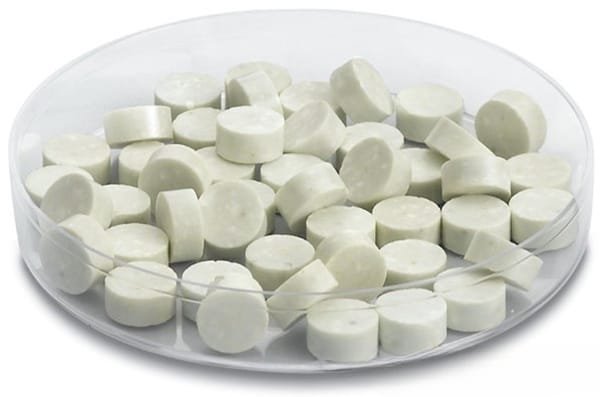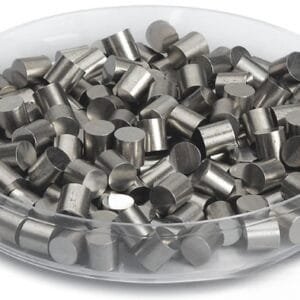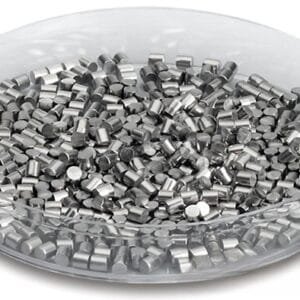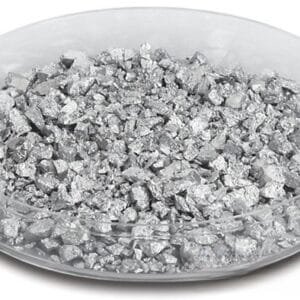Strontium Zirconate Evaporation Materials
Introduction
The Strontium Zirconate (SrZrO₃) Evaporation Material is a high-performance ceramic source used in thin film deposition by thermal or electron-beam evaporation. With its stable perovskite structure, SrZrO₃ is well-known for its high dielectric constant, thermal stability, and chemical resistance. These properties make it a vital material for advanced coatings in semiconductors, optics, and energy devices.
Detailed Description
Strontium Zirconate evaporation materials are fabricated from high-purity powders (≥99.9%) and consolidated into pieces such as granules, pellets, or tablets. The controlled stoichiometry of SrZrO₃ ensures precise film composition during evaporation, while its high melting point provides thermal stability under vacuum conditions.
Key characteristics include:
Stable Perovskite Phase: Maintains crystalline structure during deposition.
High Purity: Reduces contamination for high-quality thin films.
Thermal Resistance: Suitable for high-temperature evaporation processes.
Custom Forms: Available as pieces, pellets, tablets, or custom sizes for specific evaporation sources.
Applications
Strontium Zirconate evaporation materials are widely used in:
Semiconductors: High-k dielectric films for gate oxides and capacitors.
Optical Coatings: Functional films for optical devices and protective layers.
Photovoltaics: Thin films in solar energy conversion devices.
Energy Devices: Fuel cells, thermoelectrics, and barrier coatings.
R&D: Material science research on perovskite thin films and oxide electronics.
Technical Parameters
| Parameter | Typical Value / Range | Importance |
|---|---|---|
| Purity | ≥99.9% (3N) | Ensures reliable thin film quality |
| Form | Pellets, tablets, pieces | Suitable for thermal or e-beam evaporation |
| Melting Point | ~2,500 °C | High thermal stability during deposition |
| Crystal Structure | Perovskite (orthorhombic) | Stable phase for thin film applications |
| Density | ~5.4 g/cm³ | Influences evaporation behavior |
Comparison with Related Materials
| Material | Key Advantage | Typical Application |
|---|---|---|
| Strontium Zirconate | High dielectric stability | Capacitors, thin films |
| Strontium Titanate (SrTiO₃) | Widely studied, tunable dielectric | Ferroelectric devices |
| Zirconium Oxide (ZrO₂) | Excellent corrosion resistance | Protective coatings |
FAQ
| Question | Answer |
|---|---|
| What forms are available for SrZrO₃ evaporation materials? | Pellets, tablets, granules, and custom pieces for e-beam or thermal evaporation. |
| Can the purity be customized? | Yes, 3N and 4N purities are available upon request. |
| How are these materials packaged? | Vacuum-sealed in clean containers, cushioned with foam, and shipped in export-safe cartons. |
| What industries use SrZrO₃ the most? | Semiconductor, optics, solar energy, and advanced materials research. |
Packaging
All Strontium Zirconate evaporation materials are vacuum-sealed and carefully labeled to ensure purity and traceability. Export-safe cartons and wooden crates provide protection during shipping and long-term storage.
Conclusion
The Strontium Zirconate (SrZrO₃) Evaporation Material is a reliable source for producing high-quality dielectric and protective thin films. With its stable perovskite structure, thermal resistance, and high purity, it is an essential material for cutting-edge semiconductor, optical, and energy applications.
For detailed specifications and a quotation, please contact us at [sales@thinfilmmaterials.com].


 MSDS File
MSDS File



Reviews
There are no reviews yet.